New Performance Management Toolset 1st Edition Richard E. Mallory
Visit to download the full and correct content document: https://textbookfull.com/product/lean-system-management-for-leaders-a-new-perform ance-management-toolset-1st-edition-richard-e-mallory/

More products digital (pdf, epub, mobi) instant download maybe you interests ...

The Lean Book of Lean: A Concise Guide to Lean Management for Life and Business 1st Edition John Earley
https://textbookfull.com/product/the-lean-book-of-lean-a-conciseguide-to-lean-management-for-life-and-business-1st-edition-johnearley/

New Techniques for Management of Inoperable Gliomas 1st Edition Michael E. Sughrue
https://textbookfull.com/product/new-techniques-for-managementof-inoperable-gliomas-1st-edition-michael-e-sughrue/
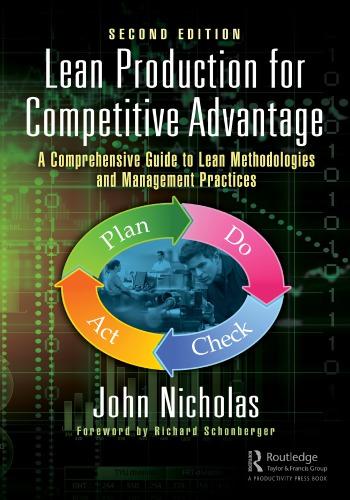
Lean production for competitive advantage a comprehensive guide to lean methods and management practices Nicholas
https://textbookfull.com/product/lean-production-for-competitiveadvantage-a-comprehensive-guide-to-lean-methods-and-managementpractices-nicholas/
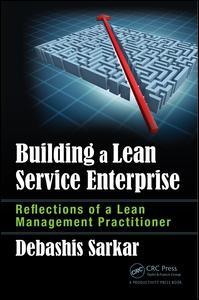
Building a Lean Service Enterprise Reflections of a Lean Management Practitioner 1st Edition Debashis Sarkar (Author)
https://textbookfull.com/product/building-a-lean-serviceenterprise-reflections-of-a-lean-management-practitioner-1stedition-debashis-sarkar-author/

Quality Standards for Highly Effective Government
Second Edition Richard Mallory
https://textbookfull.com/product/quality-standards-for-highlyeffective-government-second-edition-richard-mallory/

Applied Methods for Agriculture and Natural Resource Management A Festschrift in Honor of Richard E Howitt Siwa Msangi
https://textbookfull.com/product/applied-methods-for-agricultureand-natural-resource-management-a-festschrift-in-honor-ofrichard-e-howitt-siwa-msangi/

Management vs. Employees: How Leaders Can Bridge the Power Gaps That Hurt Corporate Performance 1st Edition Hayes Drumwright
https://textbookfull.com/product/management-vs-employees-howleaders-can-bridge-the-power-gaps-that-hurt-corporateperformance-1st-edition-hayes-drumwright/
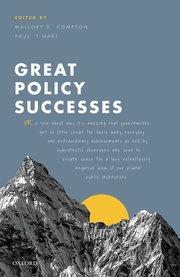
Great Policy Successes Mallory E. Compton
https://textbookfull.com/product/great-policy-successes-mallorye-compton/
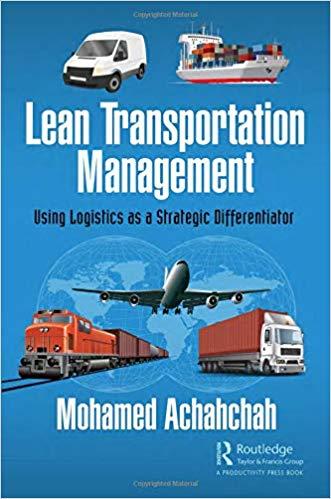
Lean Transportation Management Using Logistics as a Strategic Differentiator 1st Edition Mohamed Achahchah
https://textbookfull.com/product/lean-transportation-managementusing-logistics-as-a-strategic-differentiator-1st-editionmohamed-achahchah/
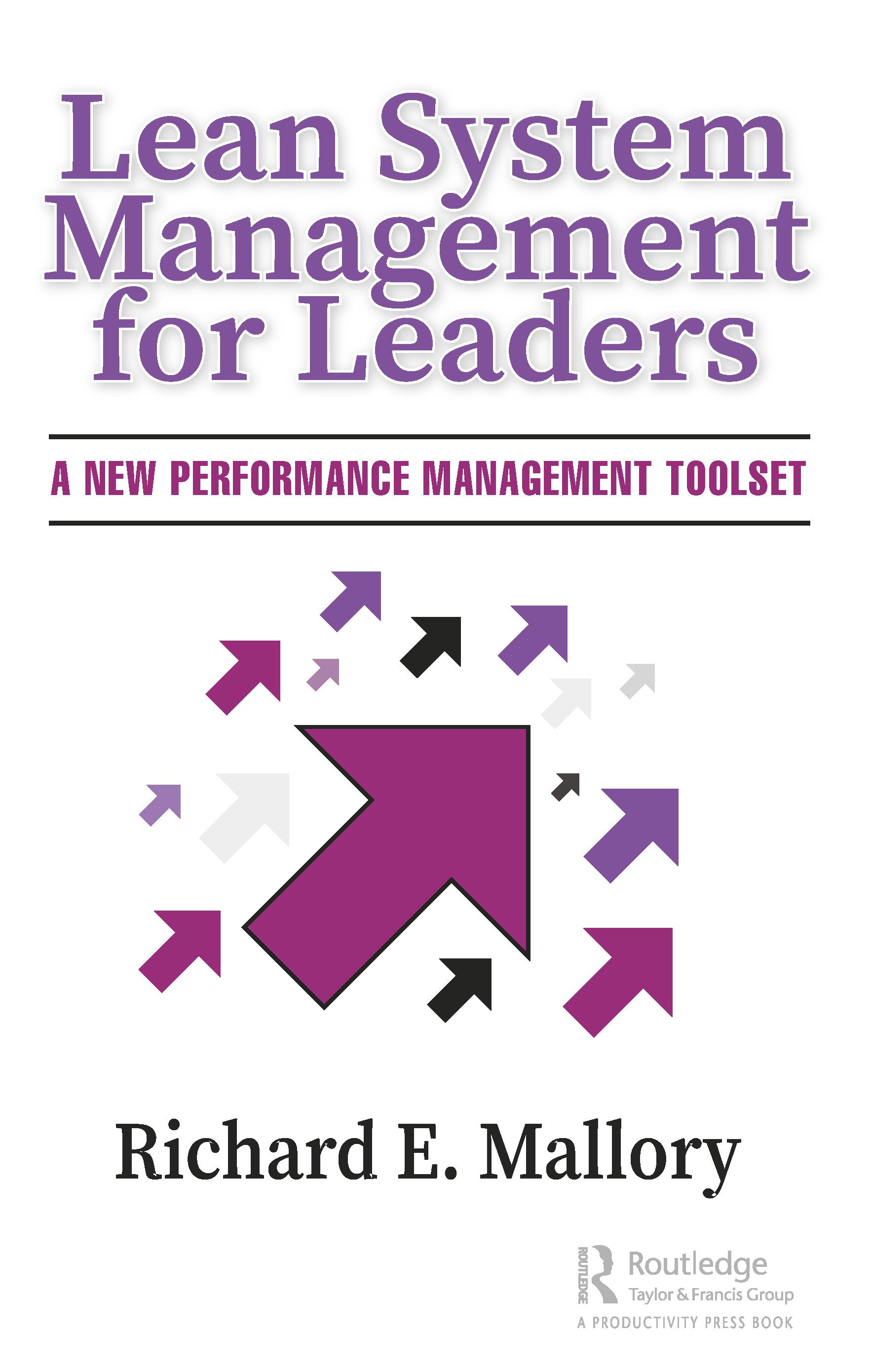
Lean System Management for Leaders
A New Performance Management Toolset

Lean System Management for Leaders
A New Performance Management Toolset
By Richard E. Mallory
Taylor & Francis
Boca Raton, London, New York
A Routledge title, part of the Taylor & Francis imprint, a member of the Taylor & Francis Group, the academic division of T&F Informa plc
Published in 2018 by Routledgea Taylor & Francis Group 711 Third Avenue, New York, NY 10017
© 2018 by Taylor & Francis Group, LLC
Routledge is an imprint of Taylor & Francis Group
No claim to original U.S. Government works
Printed in the United States of America on acid-free paper 10 9 8 7 6 5 4 3 2 1
International Standard Book Number-13: 978-1-138-48184-8 (Hardback)
International Standard Book Number-13: 978-1-351-05951-0 (eBook)
This book contains information obtained from authentic and highly regarded sources. Reprinted material is quoted with permission, and sources are indicated. A wide variety of references are listed. Reasonable efforts have been made to publish reliable data and information, but the author and the publisher cannot assume responsibility for the validity of all materials or for the consequences of their use.
No part of this book may be reprinted, reproduced, transmitted, or utilized in any form by any electronic, mechanical, or other means, now known or hereafter invented, including photocopying, microfilming, and recording, or in any information storage or retrieval system, without written permission from the publishers.
For permission to photocopy or use material electronically from this work, please access www.copyright.com (http://www.copyright.com/) or contact the Copyright Clearance Center, Inc. (CCC), 222 Rosewood Drive, Danvers, MA 01923, 978-750-8400. CCC is a not-for-profit organization that provides licenses and registration for a variety of users. For organizations that have been granted a photocopy license by the CCC, a separate system of payment has been arranged.
Trademark Notice: Product or corporate names may be trademarks or registered trademarks, and are used only for identification and explanation without intent to infringe.
Visit the Taylor & Francis Web site at http://www.taylorandfrancis.com
and the Productivity Press Web site at http://www.productivitypress.com
About the Author
Richard E. Mallory has had a career focused on implementing quality science in the public sector. He is a certified project management professional (PMP) and has a Master of Arts in Management (MM). He has served for almost ten years as a senior executive in federal and state governments and as a consultant and trainer in quality practice for almost 20 years. He served as chair of the American Society for Quality Government Division in 2013–2014 and is currently a principal consultant for CPS HR Consulting in Sacramento, California. He is also the author of Quality Standards for Highly Effective Government (Second Edition, Taylor & Francis, 2018) and Management Strategy: Creating Excellent Organizations (Trafford Publishing, 2002). He is a seven-time examiner for the U.S. and California Baldrige Quality Awards and a career-long practitioner of quality in government.
He and his wife Cathy live in Orangevale, California, and have four grown children, Eric, Kevin, Joseph, and Julie.
He can be reached at rich_mallory@yahoo.com.

Introduction
When Dr. W. Edwards Deming wrote Out of the Crisis in 1982, he said that the aim of his book was the transformation of management, because traditional management had failed. His book is often recognized as the first clarion call for what is today regarded as quality management, outlining the practices and need for excellence in delivered products and services. Today, we might better describe his insight as the branch of management science focused on superior performance, and its goal as the sustained and predictable delivery of excellent products and services—the science of value creation. This book introduces the science of value creation with system science as its foundation. It both unifies and supplants the pre-existing notions of quality management.
It provides new analytic skills for leaders of all kinds to define a best known management, a best achievable practice, and an operational plan to accomplish superior results.

1 Introducing System Management
As with many disciplines, the concepts of quality management have been progressively interpreted and stylized by various practitioners over time, particularly through specific, successful applications of its use. Its predominant application today has been narrowed even more through the focused practice of Lean Six Sigma. Through that narrowing, it has largely failed and given up on the application of quality practice to entire organizational systems—even though they are essential to designing and sustaining quality practice over time.
This book will correct that problem and introduces a broad new framework for system management,* including practical tools and guidance for its use. It provides the long-promised “profound knowledge of systems” and shows how structured systems can unify and align quality practices throughout an entire organization. It also introduces a framework for objectively measuring the maturity of systems and processes† to provide an organizational quality scorecard, essential for sustainability.
Many research studies have shown that proven practices of performance excellence, or “quality,” cannot be maintained over the long term. This book postulates that the reason for this failure is that there is no cohesive guidance on the management of groups of people working together toward specific goals.‡ Instead, we have only a patchwork application of two very
* The term system management will often be used in this book rather than its more common plural form, systems management, since the skills necessary for the management of a single system independently are required for precision of analysis and improvement. The management of a plurality of systems will be simple once the tools for system management are understood.
† Mallory, Richard, 2018. Quality Standards for Highly Effective Government. Second Edition, Taylor & Francis.
‡ Both the Baldrige Excellence Framework and ISO 9001 purport to provide such frameworks, but both their complexity and their lack of a system management standard have hobbled their broader use.
specific knowledge areas—one for process management and one for project management. That is the end of our management science as it applies to group practice, and we then try to patch it together with a generic body of knowledge which we call leadership. If individual leaders cannot pull it all together with vision, instinct, or charisma, some other books offer various “frameworks,” which are sometimes described as maps. This is certainly not a body of science; it is akin to a box of puzzle pieces that we are trying to piece into a picture that no one can really describe!
Process management and project management are treated as distinct subcategories of all organizational management, so they cannot provide a structure for guiding the organization toward the use of fact-based management and structured problem solving everywhere. Much of the practice of leadership, then, is focused only on either one-to-one interactions with individuals—“supervision”—or generic group practices* such as “motivation,” “goal-setting,” or “encouraging the heart.” The practice of “frameworks” is equally unscientific and provides a cook-book of advisory or prescriptive tactics under headings such as “Baldrige,” “ISO,” or “The House of Lean.”
It is a great omission of current management knowledge that there is no framework for defining, analyzing, standardizing, or implementing continuous improvement in areas such as governance, strategic planning, budgeting, quality control, and program management.† These, and a number of other categories of organizational work, are defined as systems in this book, and are therefore opened to fact-based analysis and improvement through the described tools and practices it provides.
The use of scientific management on the noted systems is indeed possible, because systems are repetitive and cyclical and create definable outputs. For this reason, they offer an opportunity to learn and improve, and you will learn specific frameworks and tools for their definition and improvement.
Other repetitive, cyclical, and output-specific functions or systems include organizational goal-setting, decision-making, and oversight. Not only are these not viewed as subjects of fact-based analysis and improvement in the current management literature, but they are often viewed as either isolated activities or sequential decisions that are only manageable
* Generic group practices are not associated with a particular desired outcome or output and are believed to be associated with either a positive work environment or worker commitment to generalized goals.
† Appendix III presents the Roles of Management as systems.
through spontaneous or consultative decision-making by individual managers. Similar attitudes also exist regarding the management of a program, or a program office, and all of this structuring and decision-making is therefore incorrectly left to the judgment of a single executive.
This kind of thinking—which could be called leadership despotism leads to the conclusion that the actions of executives are somehow above or isolated from the application of Lean and quality science. This in turn leads these managers to believe that the actions, events, and activities they use for decision-making and program direction should not and cannot be standardized and documented. They incorrectly believe that executive actions should be created by their individual intuition and contemporaneous judgments, which also means that they are reactive and insulated from organizational wisdom. This belief must change!
System management and systems science,* introduced for the first time in this book, references the fact that any management outcome created through repetitive and predictable components is ideally suited to fact-based management, to the application of the well-known principles of quality science, and to participation by empowered and engaged employees. This opens the door to structured learning and improvement throughout the organization, as well as achievement of superior results. This indeed is the learning organization envisioned by Peter Senge in his famous work The Fifth Discipline.
This book therefore opens a broad new horizon for management science and a new foundation for understanding and improving organizations. It presents a structured framework for defining and controlling organizations, along with a system maturity standard that allows regular measurement of the maturity and capability of defined management systems. In this way, it provides an agile framework for the organization-wide practice of quality (which we will refer to as performance excellence†) and
* The terms quality science and process science refer to the tools and knowledge associated with quality management. These had their origins in the Toyota Production System of the 1970s, embrace a broad body of professional knowledge focused on doing work right the first time, and are embodied in the Body of Knowledge maintained by the American Society for Quality. The terms system management and system science are described in this book and very broadly defined in the Baldrige Excellence Framework of the National Institute of Standards and Technology (NIST) Baldrige Performance Excellence Program. It is a new practice that will redefine the framework of quality.
† Performance excellence should be the preferred term to quality in the 21st century, in that it captures the essence of what the quality industry attempts to achieve. Its practice is then focused on all systems and processes that create value and not just the end product or service that results from this activity.
enables the use of a system maturity scorecard showing the capability and maturity of quality management function throughout the organization. It also allows and enables an organization-wide scorecard on the practice of quality at the process level through use of the process management standard.* The combination of system management with process management enables the consistent and sustainable use of quality practice and corrects the single major failure of quality practices everywhere. The alignment of structured system and process management practices creates an agile and continuing quality framework throughout the organization.
This book refers to system management in the singular for two reasons. First, there is a need to distinguish system management from the generic term systems management that fills conceptual management theory. Second, this book introduces a form of system management that is so specific and tactical that it must be a measured requirement of all future management. It is not a theory but a daily management practice.
It also reconciles the differences between project management and process management, in that system management also creates a comprehensive framework for projects that is consistent with the process management body of knowledge. Lastly, it solves the problems of application of process management to unique and tailored deliverables, which are created by variable work groups.
The structured system management framework provided in this book provides specific rules and tools for identifying and modeling key organizational systems (each one in the singular) and for their alignment in a system of Lean, quality, and continuous improvement. Its maturity standards allow measurement of the depth and completeness of the adoption of quality practices in each key system and process and overall in the business unit and the organization.
This is designed as a workbook, and is presented sequentially, so that you can immediately test its theory and value as you use it. Because it is a workbook, it will provide necessary background theory in the Appendices.† This allows you, the reader, to quickly understand these new tools, to apply them to your specific circumstances, and to rapidly devise implementation plans.
* See Mallory, Richard, September 2016. “Measuring Maturity, Quality Progress.” http://asq.org/ quality-progress/2016/09/process-capability/measuring-maturity.html.
† Two white papers on the theory and practice of system management are provided in Appendices III and IV.
This overall presentation then allows Chapter 2 to begin with the necessary descriptions and definitions of processes, systems, and projects; the chapter wraps up with a description of how systems management combines with process management to provide an overall organization-wide framework for management and change. Chapters 3–6 then present the tools and practices necessary for the identification and control of your systems through system mapping.
Chapter 7 introduces the use of the system management standard to objectively score process maturity, while Chapters 8–10 show how system management fits together with process management and project management to create an agile framework for organizational quality.
The use of structured system mapping and maturity scoring is a pioneering discipline in management science, which can forever change its practice. It opens the door to a profound new understanding of structured and designed systems with the potential to create another giant leap forward in the efficiency, effectiveness, and delivered value of all managed work enterprises.

2 Systems, Processes, and Projects—And Their Role in Managing Work
There are only four basic kinds of work in organizations. There are activities, processes, projects, and systems. Activities are one-offs, or things that are done for which there is very little precedent and that will only be done one time. So for example, if auditors show up in your office and a superior asks for someone to get them lunch, one or more people will have to invent a good way to do the job. However they do it will never be written down, will never be repeated, and will soon be forgotten. This is a classic activity, in that its work method is spontaneous and invented. It is guided by few rules,* there will be no repetition, and there is no need to learn and improve.
Process is probably the most familiar and over-used term in management, and is generally defined as a set of defined incremental activities that transform an input to a valuable output for an end-user or customer. The term process as discussed in this workbook will typically refer to highvolume workflow that is completed by a formally structured group of persons, each doing specialized tasks. The output of a process is generally standardized and uniform, so that any variation in the output is not typical. The “science” of standardizing and controlling process began in 1923 with the presentation of a professional paper on process flowcharting by Frank B. Gilbreth Sr., and then continued with many books on Lean and continuous quality improvement throughout the 1900s.†
* Organizational policy or ethical standards may impose a few rules. In this case, it is likely that policy will prohibit the consumption of alcoholic beverages in government offices, and ethical rules may require auditors to pay the cost of their own lunch.
† A bibliography of the author’s favorite books on Lean and process improvement is provided in Appendix IV.
Project is probably the second most familiar term in management and is a temporary endeavor undertaken to create a unique product, service, or result of lasting benefit. It generally has a fixed resource base and a project team that will disband on project completion. While any specific project is done just once, the project team members and their organization will often work on many projects over the course of many years, and so, their knowledge and practice are repeated. In this manner, while projects are often thought to be “unique,” there is great value found in performing “lessons learned” reviews after each effort to learn and understand from the cyclic features of projects collectively. This is one of the underlying principles of system management and the reason why it holds great promise for project management. As a result, we will treat projects as a subcategory of systems.
System is the least understood management term, and when used, it generally implies a repetitive group of practices. Our definition will be a wellordered and repeatable approach to completing required and specific work outputs. The primary distinguishing feature of a human system is that it is comprised of an intent to do something, initiated by leadership or intent (or “logos”); that it seeks to control resources; and that it has a specific “aim” or purpose. It is for this reason that the purpose of your system will be the first topic covered in the next chapter.
This book deals with human systems and their intent through leadership to achieve outcomes (an influence on the larger organization or world) through the creation of products, services, plans, mental models, and other kinds of specific “outputs.”
In this work, management systems are considered to be the repetitive and important workflows of executive and program management offices or of project management—any of which should have a well-defined purpose and method, but probably often do not. Defined systems may include a rather broad focus, as in organizational governance, organizational oversight, and quality management systems; or, they may include rather specific executive management functions, such as the annual budget process, hiring and recruitment, or management of the safety program. In any case, we will regard management systems as a deliberate construction of management* and the only one that can link processes end-to-end to each other and to reporting systems, strategy, controls, authority, support, and resources. So while the skeptical reader may want to dismiss
* As with processes, management systems may be poorly designed and operated in their “native” state but will be refined and continuously improved through the application of systems management.
the concept of system as being adequately defined at present, because it is so fundamental and ubiquitous, this book will focus on a clearer and more objective definition. This workbook will rely on the demonstration of valuable tools for management and improvement of systems as a currently unmet need of management science.*
The profound knowledge inherent in this analytic structure is that almost all of the work of every organization can be defined through its use, and, therefore, a structured quality/performance framework can be developed. Through an understanding and simple application of all of these frameworks, the practice of management will be transformed.
However, to use these three frameworks, you will need to know how they are the same and how they are different, which is what we will cover next in this chapter. We will also want to know how systems management combines with process management to provide an overall organizationwide framework for management and change, and that will be covered in Chapters 8 and 9.
PROCESSES, PROJECTS, AND SYSTEMS—WHAT IS DIFFERENT AND WHAT IS THE SAME?
Looking again at the four categories of work initially described above, we can see that activities are the only type of work done just once and forgotten, while the other three categories (process, project, and system) are performed on a repetitive basis. And even though each project is defined as a one-time activity, a series of projects will be performed by any work group or organization over a period of time. So while a single project may be unique, project management is cyclical and can therefore benefit from lessons learned. The knowledge base of the organization regarding projects can grow and improve.
It is therefore apparent that most of the important work of our organizations and most of their high-value work is repetitive in this manner. This observation frames our first conclusion: that the active management of processes, projects, and systems is our highest-value work, and that it is all repetitive.
* See Appendix III for further background on systems theory in the white paper entitled “Systems Management to Launch the Next Era of Quality.”
The fact that it is repetitive means that we can observe its cycles and learn from that experience. In many ways, our repetitive work will have a predictable pattern of practice, so that we can learn and improve its outcome in the future. Just as we do in project management, we can always conduct lessons learned and look for repetitive patterns of best practice.*
The shared characteristic of all repetitive work is a defined purpose or outcome, achieved through the creation of specific work outputs, and through which we evaluate or measure its success. In fact, this is one of the major differences between what we might call traditional management, the kind that Dr. Deming said “had failed,” and the management of quality science, which has periodically created the highest levels of innovation, productivity, and performance ever seen. The primary significant difference is in the act of defining requirements for its output so that operational efficiency can be measured, as shown in Figure 2.1.
In process, we say that the requirements of the process are determined by the customer,† and we can turn to the customer as the basis of measurement. Regardless, the definition of a preferred best outcome to each process, project, and system is possible, and the establishment of precise and measurable criteria of success is the first factor for optimal performance (or “quality”) management.
Traditional management
Design operations to meet requirements
Design operations to meet balanced customer and stakeholder requirements based on metrics
FIGURE 2.1
Run the operations
Quality management
Run the operations with a designed process ow
Evaluate, learn, and improve
Evaluate, learn, and improve using metrics and understanding variation
Showing how a measured, objective standard differentiates traditional management from quality management.
* In some cases, these lessons learned are contained in professional literature as best practices or as work guides. All of professional knowledge, of medicine for example, will define the best practices of its systematic application.
† An exclusive focus on a customer is not sufficient in all instances, and certainly not for regulatory, evaluative (as in insurance claims), audit, or caretaker processes. The establishment of criteria for most successful outcomes is still possible, however, leading to the term process design requirements used in this book. A single process customer can best be understood as a process stakeholder.
All three types of repetitive work can be more fully explained by the unifying theory of work management, which is new to quality science, and which seeks to identify the delivery components of repetitive work. In this way, it provides the points of control through which we can make it more predictable and manageable. It will also create the basis for managers to learn from past experience and constructively apply that learning to the future so that better results, or improvement, can take place.* It is presented in Figure 2.2.
In Figure 2.2, the factors of possible commonality are categorized as the uniformity of the production environment and the uniformity of the people, steps, and methods within that environment.† It is acknowledged that these categories are not entirely distinct and mutually exclusive in their definition, and that the combination of factors is somewhat arbitrary. So in fact, the factors involved in the uniformity of the people—presumably skills, training, job definition, and task definition—are separated from the uniformity of steps and methods.
2.2
Unifying theory of work management.
* It is the author’s belief that this is what Dr. Deming was referencing in his “theory of knowledge” as one part of the system of profound knowledge: specifically, that all process control and systems control is an expression of human learning and continuous improvement.
† This line of thought regarding the methods of standardized work was also noted in The Structuring of Organizations, by Henry Mintzberg, 1979, pp. 3–9.
That said, however, let us begin with the uniformity of the people who create the work output, whether through process, project, or system, because our management actions to standardize key performance attributes in each group will help us to predictably and consistently deliver excellent output. Following this line of thought, we can see how many traditional management practices should help us in this regard.
Specifically, we see that hiring employees with specific baseline knowledge, skills, and abilities is one way to create uniformity of people, and that the principle of uniformity does not mean that all are the same but that each group, and successors in those positions, meet a uniform minimum standard for that job. The repetitive series of actions to identify those skills, and to hire and place employees who match those skills, is both a system and a key practice for the integrity of all other processes, projects, and systems throughout the organization. This observation points to the thesis of this book, that through defining systems and processes, and aligning those systems and processes, we will have developed a perfect agile framework for performance excellence, or quality.
Similarly, the training of employees to meet those requirements is another important underlying factor, and the repetitive series of actions that creates that training is another organization-wide system.*
Finally—especially with systems and projects—getting people to buy in to a sense of responsibility for fully and completely fulfilling the correct actions necessary to obtain the highest-value output is critical to the achievement of that highest-value output. The observation that there is a need for a uniformity of methods, steps, or both to achieve the highest levels of output in repetitive work supports the idea that there is a preferred and learned best known practice, which is another foundation of excellent work.
In this notation of a best known practice, we can also see that processes are specific enough that we can expect to map one very specific path through the series of work tasks that exist between input and output and that we can expect to be able to assign very specific tasks to each person assigned a part of this work. Indeed, those who carry out the work process generally have specific job assignments that are embedded in these associated work processes.
Systems and projects, on the other hand, are often completed through a series of activity groups or milestones that exist between the input and
* The structuring of this system will be an example in Chapter 5.
the output. There is no one specific and sequential path, and there is not a dedicated team to carry out the work. This does not mean, however, that there is not a set of best known practices, as is demonstrated by the project management body of knowledge (PMBOK)* and the project management practices of every project management office. The same is true of systems, and even though executive management often fail to either identify or document best management practices for systems, this does not mean that they do not exist.
So, for example, while it is generally known in most organizations that the system of budgeting should begin with requests from operating divisions that are based on an assessment of current operational performance and future needs, that is not always done. And while getting a two-way discussion between operational executives and financial executives regarding goals and priorities for budgeting is also a best practice, that does not always occur either. A busy and chaotic world (and sometimes, a political world) will often short-cut and abridge best known practice. Likewise, in the area of project management, the development of a project plan and schedule, with a regularly recurring update of results against that plan, is a best known practice. However, we also know that those practices, too, are often short-cut and abridged.†
The level of development and documentation‡ of a best known practice then becomes another factor in the maturity and capability of a process, project, or system. It is certainly far easier to use a best known practice when it has been prepared and is “on the shelf.” Where it has not even been developed, it may exist only in the individual knowledge of some of those who must carry it out, and their knowledge of what to do may also be fragmentary. Likewise, where the best known practice is available and expected, it is far easier to make assignments or (in the case of systems and projects) to negotiate responsibilities. It is far easier to mobilize a team and establish skills when at least the activity groups and milestones are defined.
* Many practitioners feel that while PMBOK provides situational guidance, there is not just one path to follow.
† It is acknowledged that one impediment to a single rigid structure is the perception by some that it will inhibit innovation. It should be understood that there is a difference between technical innovation and structuring processes after a single best known practice has been established. Also, the organizational culture should continue to allow and encourage the examination of best known practice and the adoption of future improvements.
‡ Process documentation can take several forms but often includes a process flowchart, supporting procedures, templates, desk manuals, standards, and similar work aids.
This raises the issue of what we might call native systems, which operate on their own volition, versus what we might call structured or managed systems, which have been identified by executive leadership as critical to operational success. Structured systems demand a disciplined and structured approach as the basis of improved operations. Organizations as well as societies do many things through “common knowledge,” habit, and culture, and while these sometimes turn out well, they can often turn out badly. Simple things are mostly likely to do well in a native condition. In one of the best known examples, Americans are almost always open to the idea of standing in line and taking turns. These are examples of native systems, which exist without any imposed design or structure. Our free market economy is another native system, and government efforts to influence its result become an engineered system imposed on a native system. So, the interplay of systems is also an important management concept, which is touched on in later chapters.
One definition of politics in organizations is how things get done when there are no rules, order, and instructions. When that is the case, either workers improvise or leaders make decisions and give incremental task orders based on political agendas or individual judgments without regard to analysis or past learning experience. Failed projects often operate without systematic structure and without regard to best known practice. Likewise, the operation of a system of training will often not go well or have good results as a native system. So, we can see the importance of the imposition of an appropriate level of best practice steps and methods.
This raises a more interesting observation regarding systems. The existence of a system as a structured or managed system depends on a collective shared knowledge, necessary to define its purpose, its best known practices, and its subordinate activity groups. This kind of disciplined and structured look is often the result of leadership interest* in developing this “logical path” for the work to follow.
The factors of uniformity of the production environment are obviously more applicable to processes than to projects and systems, since processes are often completed by a dedicated work team in a controlled and dedicated physical facility. In such an environment, the reliability and alignment of computer systems, office machines, and production facilities can be much more closely controlled. Those who are familiar with Lean
* Informal leadership and other types of interest may also be sufficient to motivate a logical ordering—or logos—that drives system management and improvement.
process methods may immediately recognize that the use of visual management techniques and an emphasis on Five “S” methodologies* are both much easier in such a controlled physical environment.
Projects and systems, on the other hand, may need to operate in many and various environments, and their designated leaders may even depend on things (subcontractors or computer systems) over which they have NO control. One of the most distinguishing factors between systems and processes is the need to plan for intervening variables and risks over which there is little or no control.
Similarly, the control of inputs into such repetitive cyclical workflows, sometimes called supply management, is likely to be much more controllable for processes than it is for projects and systems, even though the attempt to control such inputs is equally important to all.
Finally, we can see that the specific characteristics of the product or service created by a project or system are much more likely to be different from cycle to cycle than they will be for a process. Indeed, the specialization of work production in processes is one of the things that enable the specialization of assigned labor and the specificity of the tasks necessary to create it. This does not mean that it is not important to precisely specify the output requirements of systems and processes—only that it is likely that the value creation process will need to be adaptable to respond to unforeseen changes during each cycle of its operation.
We will use our awareness of how they are the same and how they are different so that we can best identify the measurable attributes and management framework most appropriate to manage each, and their level of compliance (native versus engineered/managed) to determine the maturity of the process or system.† Table 2.1 will provide a quick reference guide.
So as you think about the structured work created by your organization, if it is repetitive and cyclical, you can presume that either a process model or a system model should be used to ensure management best practices, even if we are looking at work done by front line service providers. You will find that a great deal of the work of all organizations is best structured and managed using a system focus.
* Sort, straighten, shine, set in order, and standardize.
† We will allow project management to fall into the background at this point and will use the term system management as the ordinate principle.
Project System
TABLE 2.1 Characteristics of Process, Project, and System—Similarities and Differences
Yes. While the purpose or function of each system is clear and unchanging, the steps, methods, and characteristics of the delivered product or service may have a high degree of variance. A system of “emergency response,” for example, may have great variance in the services provided
Yes, although even within specific projects, changes and adaptations are expected. This could include changes in the number of deliverables (as in agile) or in the configuration or characteristics of each deliverable
Mostly. Executive and program systems usually support operations and process, so they are typically annual. Some systems (such as marketing) may not have any single, specific deliverable, and so, only their evaluation and improvement events would be cyclical
Yes, although single project cycles may be from one month to years long. The project management practices in an organization are a form of system, and only the events of evaluating and improving those methods are cyclical, on a varying schedule
No. Systems must also respond to variation in conditions and personnel. Some outputs are produced in a network configuration. * No single path exists
No. Projects must respond to frequent variation in conditions and personnel and perform tasks in parallel, when possible, or in sequence, when required
Partially. While systems are sometimes made up of personnel whose job is directly linked to the system’s performance, the contribution of many others—inside and outside the organization—may be required ( Continued )
No. Project teams are often made up of people whose project tasks are only a small part or no part of their current job requirements
Process
Yes. The outputs of each process cycle are always very similar, if not identical, and the measurable attributes of the deliverable are also highly uniform
Defined desired outcome—purpose or “aim”
Yes—sometimes process cycles are in minutes, sometimes in days
Observable cycles
Yes. Process management strives to standardize the steps and order to obtain best results
Single best path— same steps in same order
Yes. Projects often can count on a dedicated workforce performing the work, and often, their job requirements are directly aligned with process requirements
Single dedicated team
TABLE 2.1 (CONTINUED)
System
Yes. As with projects, best practices apply within activity groups, in the oversight of each cycle, and in the achievement of defined requirements for milestones
No. Many systems allow intrinsic quality criteria to be flexible to allow for changes in the delivered product/service, the effort required to deliver it, or the timing of delivery
Yes. Systems have a defined purpose (outcome) but can significantly modify the steps and actions used and, hence, the quality of the end deliverable. The output of systems is often highly variable
Yes. Systems must anticipate intervening variables and have a plan to accommodate them. That is one of the defining attributes of a system
Project
Characteristics of Process, Project, and System—Similarities and Differences
Process
Yes. Excellent projects seek to maintain a high level of specificity in tasks, task requirements, and sequence (or flow) Yes, but only in activity groups, in project management oversight, and in the achievement of defined requirements for milestones
Best known practice
Yes. Processes must have rigid go/ no-go decision points necessary to ensure quality in the delivered product/service No. While some project criteria may have rigid and inflexible acceptance criteria, a range of acceptability exists at many other points
Somewhat. Projects will generally have output requirements on delivered portions of work and outcome statements for the project as a whole. There may be negation of delivered segments and output requirements to achieve the bigger (or primary) purpose and to keep within budget and schedule
No. Projects also emphasize continuous delivery and track the critical path to avoid stoppage and interruption
Formal decision points
No
Output requirements— variance in attributes of what is produced
No. Lean calls for continuous flow, and it is a primary goal of process management to avoid stoppage and interruption
Expectation that the defined cycle will be interrupted
* See Figure 8.3 for discussion of the network configuration.
For example, if we look at healthcare services provided to patients in a hospital, we can see that there are standardized positions (nurses) visiting patient bedsides, doing a variety of diagnostics, and providing a variety of types of services as needed. The lack of a uniform set of tasks—a defined single path—and the diversity of types of responses—that is, highly variable output requirements that might be needed—should be tip-offs that this is NOT a process. If we were looking at the dispensing of patient medications, we would see a single path of steps and tasks that should occur in a particular order and that result in a uniform outcome. THIS would be best managed with a process model.
Likewise, if you were to review the work stream associated with an in-house counsel rendering a legal opinion, you would again see a variety of activities performed, based on the specific aspects of the matter under review and resulting in an opinion spanning various subjects with various levels of certainty. This work is best managed as a system. However, if legal office review of contracts is involved, it is much more likely that a process model will suffice.
In the previous two examples, there was a generalized component of work that could be subdivided into process work, but this is not always true. The annual evaluation and prioritization of routine maintenance needs in a sewer collection system may only be systematic. We know that it is systematic, because the outcome can be defined, even though the specific tasks and actions selected (the number and nature of service actions chosen) are negotiable. Even though the selection of such work may be driven by policy or service protocols that make it more process oriented, the likelihood of significant intervening variables makes system management techniques more applicable.
The power of system management to bring order and analytic method to most of the structured work output of organizations, and to make it subject to fact-based management to continuous improvement methodologies, is profound. The next chapter will present mapping and analysis tools that are new to management and that provide a lean and agile framework for organizational transformation.
As you review the structured work activities in your organization, Table 2.1 will help you to distinguish the differences and to then pick the best tool for its best practice operation and for its improvement. A clear recognition of the two forms is important to proceed. It is important to be able to understand what constitutes a system and what constitutes a process, so that you use appropriate diagnostic and improvement techniques as part of your management practice.
Another random document with no related content on Scribd:
In Line, from muzzle to muzzle 15 yards.
In Column of Route 177 ” ” Sub-divisions 87 ” ” Divisions 87 ” ” Half battery 72 ”
A Gun, or Waggon, with 4 Horses covers 11 yards of ground, from front to rear.
For every additional pair of Horses 4 yards should be added.
A Battery of 6 Guns, when limbered up at full intervals, occupies from
Right to left 78 yards.
Front to rear 26 yards.
On each flank, 22 additional yards should be allowed.
A battery of 6 Guns, when unlimbered for Action, at full intervals, occupies from
Right to left 78 yards.
Front to rear 37 yards.
The space required for reversing a Gun with 4 Horses is 9 yards, and for a Waggon about 8 yards.
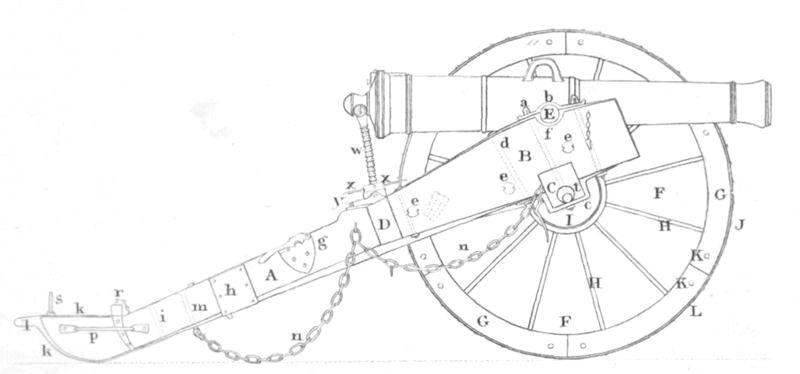
NAMES OF THE PRINCIPAL PARTS OF A FIELD GUN CARRIAGE.
A Block, or Trail. J Tire, or Streak. g Portfire clipper q Handspike shoe.
B Cheeks, or Brackets. K Rivets. h Locking plate. r Handspike pin.
C Axletree. L Tire, or Streak bolts. i Trail plate bolt. s Handspike ring.
D Ogee. a Eye, or Capsquare bolts. k Trail plate. t Axletree arms.
E Trunnion holes. b Capsquares. l Trail plate eye. u Dragwashers.
F Wheel. c Axletree bands. m Chain eye bolt. v Nave hoops.
G Felly. d Bracket bolts. n Locking chain. w Elevating screw.
H Spokes. e Transom bolts. o Breast, or advancing chain. x Handles of elevating screw.
I Nave. f Trunnion plates. p Trail handles. y Elevating screw box.
P��� �� � 9 PR B���� F���� C�������.
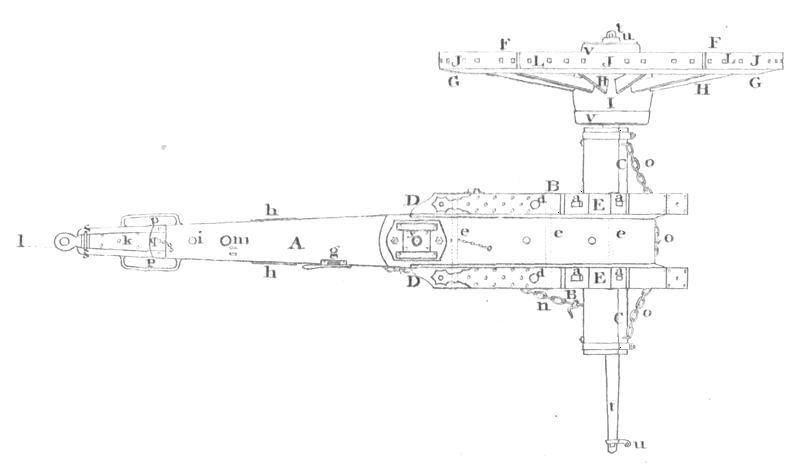
Section 5. Method of performing the duties of serving ordnance.
Section 6. Ranges.
Section 7. Method of laying a piece of ordnance.
Section 8. Limbering up.
F���� (����, �����, �� ����) ������ �� | Halt: Limber up.
Section 9. Unlimbering, or coming into action.
To the front, rear, right or left. The reverse of limbering up.
Section 10. Moving with the Prolonge.
P������ �� ������� ���� ��� ��������.
T�� ������� ���� ������.
Nos. 1
Right about face.
H���. Front.
U����� P�������.
P������ �� ������� ���� ��� ��������.
Nos. 3
A����� Drive on.
Section 11. Mounting field ordnance, with the materials belonging to the battery.
Section 12. Dismounting field ordnance, with the materials belonging to the battery.
Section 13. Shifting shafts.
Section 14. Disengaging a shaft horse, when he falls, or is disabled in action.
Section 15. Changing wheels, when the lifting jack is not at hand.
Section 16. Shifting the medium 12 pounder.
Section 17. To remove disabled field artillery.
Section 18. Exercise with Drag-ropes.
1. A light 6 pounder with its limber requires 15 men, six of whom are told off entirely for the drag-ropes, the other men at the gun also assisting in manning them: No. 9 is always in the shafts, and No. 8 at the point of the shaft, near side. A 9 pounder requires additional men, and a double set of drag-ropes.
2. The drag-rope men are numbered off from 10 upward. Nos. 10, 12, 14, are with the left drag-rope; 11, 13, 15, with the right; 10, 11, carry the drag-ropes.
3. The gun being limbered up, and the detachment and drag-rope men in the order of march, at the word “H��� ��,” Nos. 8 and 9 get into their places; 10 and 11 move outside the gun detachments to the rear, and hook on to the gun drag-washers, passing the end of the drag-ropes at once to the front.
The Nos. then man the drag-ropes as follows:—Nos. 10 and 11 outside, close to the drag-washer; 2, 12, 3, and 13 the centre of the drag-rope; 4, 14, 5, and 15 the front; 6 and 7 the ends The gun detachments inside, and the drag-rope men outside. No. 1 at the point of the shafts, off-side. At the word “U�����,” Nos. 10 and 11
unhook, coil up the drag-ropes; and the whole then form the order of march.
4. At the word “A�����,” whether to the “�����,” “����,” “�����,” or “����,” the drag-ropes are at once quitted; Nos. 10 and 11 unhook, and coil them up; and the whole of the drag-rope men retire with the limber, forming in front of it two deep, as they were numbered off. In limbering up, the drag-rope men form the order of march, and wait for the word to hook on.
FORMATION OF A BATTERY.
A battery of Artillery is generally composed of six pieces of ordnance, to which a Company of Artillery is attached. The number of ammunition, forge, and store waggons varies according to the nature of the ordnance.
Section 19. Fitting of saddles, bridles, harness, &c.
Section 20. Harnessing.
Section 21. Carrying forage.
Section 22. Instruction for Drivers.
Section 23. Parade, and inspection.
The Battery, limbered up, is told off by sub-divisions, divisions, and half batteries.
One gun and its waggon constitute a sub-division.
Two sub-divisions ” a division.
Three sub-divisions ” a half battery.
The battery is numbered from right to left by sub-divisions. It is then told off into three divisions. No. 1 the right; No. 2 the centre; No. 3 the left. Sub-divisions Nos 1, 3, and 5 are also distinguished as right sub-divisions of divisions; and Nos. 2, 4, and 6 the left; the two centre sub-divisions are also to be named. It is also told off into half batteries, and these are distinguished by right, centre, and left subdivisions of half batteries. The gun of direction should always be
named. A flank gun is generally named with a battery of four guns, and the right centre gun with a battery of six guns.
Spare carriages, with the battery, form a third, and, if necessary, a fourth line, in rear. The forge and store-waggon always in the centre, and the ammunition waggons on the flanks, covering those in the front line.
Section 24. Posts, and duties of Officers, and mounted Noncommissioned officers, &c., at exercise.
Second Captain.
In line, limbered up.—One horse’s length in rear of the centre.
In column.—Two horses’ length from the centre on the reverse flank.
In action.—He assists the Captain in general superintendence.
He dresses all points of formation, gives the word “Steady,” when they have been correctly taken up, and the formation completed. When required he commands a division.
Subalterns.
In line, limbered up.—The senior on the right of the right division; the second on the left of the left division; the junior on the right of the centre division.
In column of route.—On the pivot flanks of their leading subdivisions.
In column of divisions.—On the pivot flanks of their respective divisions.
In column of half-batteries.—The subaltern of the centre division, on the pivot flank of the leading half battery. The others continue on the same flank of their sub-divisions as when in line.
In action.—Between the guns of their divisions, a little in rear. They command the divisions to which they are attached, dressing in line with, and close to the leaders, and always with the guns.
In shifting from one flank to the other —It is always along the front, and at a canter; and in joining the new sub-division, the officer always turns his horse’s head inwards.
Staff Serjeants.
In line, limbered up.—The senior on the right of the marker of the right division. The junior on the left of the marker of the left division.
In column of route.—One on the reverse flank of the leading gun; the other on the pivot flank of the rear carriage.
In column of divisions.—One between the guns of the leading, the other between the guns of the rear division.
In column of half-batteries.—On the reverse flank of the waggons of each half battery.
They take up points in changes of position. In line formations, 10 yards from the flank sub-divisions; in column formations, 10 yards in front and rear. They dress the markers when there is no staff officer; and the limbers and waggons in action.
Markers.
In line, limbered up.—In line with the leaders of the waggons, and covering their officers.
In column of route.—With their leading waggons covering their officers. (Without waggons, covering their officers, and in line with the centre horses of the gun.)
In column of divisions, and half-batteries.—They cover their officers. (Without waggons, on the reverse flank of their divisions.)
In action.—Those of the right, and centre divisions on the right of the leaders of the limbers of their right sub-divisions. The marker of the left division, on the left of the leaders of the limber of the left subdivision.
They take up points in changes of position; in line formations, for the sub-division nearest the one of formation; in column formations, for the pivot sub-division.
Farriers, and Artificers.
The farrier is generally attached to the forge; but when the battery is limbered up he is in the centre, in rear of the second captain. The other artificers are told off in the gun detachments when not mounted.
Trumpeters.
In line, limbered up.—On the right of the battery, in line with it, one horse’s length distant.
In column.—One horse’s length in front.
During manœuvres.—One with the commander; the other in rear of the battery.
MANŒUVRES OF A BATTERY OF SIX PIECES
Section 25. B������ �� ����.
1. To advance. Commanding officer’s word of command repeated by officers.
[16]T�� ������� ���� �������—M����.
The officer, and marker of the subdivision of direction take up points.
2. To retire.
R���� (�� ����) �������—M����.
3. To come into action.
A����� �����.
Senior staff-serjeants.—Left reverse.
4. To diminish (or increase) intervals on the march.
To diminish.
H���, �� �������, ��������� ��—���-
Nos. 1. Right (or left) half turn—Trot —Front turn—Trot—(except No. 1 of
�������� the named sub-division).
To increase.
F��� ��������� �� ���-��������.
5. To take ground to a flank.
R���� (�� ����) ���� ������— M����.
The officers shift to the pivot flank of what will become their leading subdivisions.
6. To make a half turn on the march.
R���� (�� ����) ���� ����—M����
7. To form Column of divisions in rear of a flank.
F��� ������ �� ��������� �� ���� �� ��� �����.
Centre division—Right reverse— March—By the left—Left take ground— Halt—Dress.
M����. Left division—Right reverse—March —By the left—Left half turn—Left take ground—Halt—Dress.
F��� ������ �� ��������� �� ���� �� ��� ����.
Centre division—Left reverse—March
—By the right—Right take ground— Right take ground—Halt—Dress.
M����. Right division—Left reverse—March
—By the right—Right half turn—Right take ground—Halt—Dress.
8. To form Column of divisions in front of a flank.
F��� ������ �� ��������� �� ����� �� ��� ����—
Centre division—Forward—March— Left take ground—Waggons close intervals—Right take ground—Halt— Dress.
M����
F��� ������ �� ��������� �� ����� �� ��� �����—
M����.
Right division—Forward—March— Left half turn—Left half turn—Waggons close intervals—Right take ground— Halt—Dress.
Centre division—Forward—March— Right take ground—Waggons close intervals—Left take ground—Halt— Dress.
Left division—Forward—March— Right half turn—Right half turn— Waggons close intervals—Left take ground—Halt—Dress.
9. To form Column of divisions on the centre division. This manœuvre is a combination of Nos. 7 and 8.
10. To change front to the rear. First method. By a countermarch.
T�� ������� ���� ������ ����� �� ��� ����—G��� �����, W������ ���� ���� ������—M����—
R���� ������������ F���� ����—H��� D����.
The officers shift to the pivot flank of their leading guns—viz., to the left of 1, 3, and 5 guns.
Second method. On the centre.
C����� ����� �� ��� ���� �� ��� ������ —M����.
Centre division—Sub-divisions inwards about wheel—March—Halt— Dress.
Right division—March—Left wheel— Left wheel—Halt—Dress.
Left division—March—Right wheel— Right wheel—Halt—Dress.
Third method. When at diminished intervals; on the march.
T�� ������� ���� ������ ����� �� ��� ����; �� ��� ������. L��� ���� �������— ����—H��� ��������� ������� ����� ����� —F������.
11. To change front to a flank.
First method. Right (or left) back, on a flank sub-division. Nos. 1.
C����� ����� �� ��� ����� �� N�. 6. M����.
C����� ����� �� ��� ���� �� N�. 1. M����.
6. Left wheel—Left about wheel—Halt —Dress.
5. } Right reverse.
4. } Left shoulders.
3. } Right reverse.
2. } Halt—Dress.
1. } Nos. 1.
1. Right wheel—Right about wheel— Halt—Dress.
2. } Left reverse.
3. } Right shoulders.
4. } Left reverse.
5. } Halt.
6. } Dress.
For Action.
C����� ����� �� ��� �����, �� N�. 6, ��� ������. M���� (��
������ ����� �� ���
The named sub-division comes into action in the new direction; the others proceed as before, and come into action to the rear.
���� �� N�. 1, ��� ������. M����).
Second method. Right (or left) forward, on a flank sub-division. Nos. 1.
C����� ����� �� ���
���� �� N�. 6. M����.
C����� ����� �� ���
����� �� N�. 1— M����.
6. Right wheel—Right about wheel— Halt—Dress.
5. } 4. } 3. } Right shoulders. 2. } Halt—Dress.
1. } Nos. 1.
1. Left wheel—Left about wheel—Halt —Dress.
2. } 3. } Left shoulders.
4. } Halt.
5. } Dress. 6. }
For Action.
C����� ����� �� ���
����� �� N�. 1 ��� ������— M����—(��
C����� ����� �� ���
���� �� N�. 6, ��� ������—M����).
The named sub-division comes into action in the new direction; the others proceed as before, and come into action to the front.
Third method. To the right (or left) on a central sub-division, one flank thrown forward, the other back. This is a combination of the First and Second methods.
Note. A battery may change its front, Half right, or Half left, on the same principle as already detailed. The commanding officer’s
word would be “C����� �����, H��� ����� (�� H��� ����) �� S��-��������.”
These manœuvres can be executed on the same principle, by divisions, or half batteries.
A Battery can also change front on a moveable pivot by a simple wheel.
12. To advance from a flank, in column.
A������ ���� ��� �����, �� ������ �� ���������—M����.
A������ ���� ��� ����, �� ������ �� ���������—M����.
Right division. Forward by the left. March.
Centre, and left divisions
Nos. 1.
Right take ground. March—Left take ground.
2. } Waggon right. Waggon rear.
4. }
Left division
Centre, and right divisions
Nos. 1.
Forward by the right—March.
Left take ground— March. Right take ground.
5.} Waggon left. Waggon rear.
3.}
13. To advance from the centre, in double column of subdivisions.
A������ ���� ��� ������, �� � ������
Centre division—Forward.—Trot— March.
������ �� ������������—M����.
Right division—Left take ground— March.
Left division—Right take ground— March.
Nos. 1.
2. } Right take ground—Trot.
1. } Right take ground.
5. } Left take ground—Trot.
6. } Left take ground.
14. To move from a flank along the front in a column of divisions.
M��� ���� ��� �����, ����� ��� �����, �� ������ �� ���������.
M����.
Forward—March. Left wheel.
Note. To advance from the left, along the front, is done in the same manner.
15. To advance from a flank, in echellon of sub-divisions.
A������ ���� ��� �����, �� �������� �� ���-��������� M����.
Advancing from the Left is done on the same principle.
Note. A Battery in echellon of Sub-divisions, if required to change its front when in action, can do so at the word “A����� ����” (�� �����), by merely throwing the trails round, and bringing the guns into the new direction, the limbers and waggons forming in rear of their guns.
16. To advance from a flank in echellon of divisions.
A������ ���� ��� �����, �� �������� ��
The right division advances, the centre moves off in succession, when
���������—M���� at its wheeling distance, in rear of the leading one.
The left division follows in the same manner.
Advancing from the Left is done on the same principle.
Note. A Battery in echellon of Divisions, if required to change its front when in action, does so as follows:—
C����� ����� �� ���
����, �� ��� ���� ���� �� ���������
M����.
Nos. 1.
2. }
4. } Action left.
6. }
1. } Front limber up.
3. } Left wheel—Halt.
5. } Action front.
An echellon of Half batteries is formed in the same manner as that of divisions; the rear half battery must, however, keep its wheeling distance from the leading one. When in action, if the front is to be changed, it is better to do it on a centre gun.
Retirements in echellon, are done on the same principle as the advance.
17. To retire from a flank in column.
First Method.
R���� �������� �� ��� ����—M����.
Right division—Sub-divisions inwards about wheel—March.
Centre and left divisions—Forward— Right wheel—March—Right wheel.
To retire with the Left division is done on the same principle.
Second method.
R����� ���� ��� �����, �� ������ �� ���������—M����.
Right division—Right reverse— March.
Centre, and left divisions—Right take
ground—March—Right take ground.
Nos. 1.
2. } Gun left.
4. } Gun rear.
18. To retire from the centre in a double column of sub-divisions.
In order to perform this manœuvre, the battery should be reversed, and then (with waggons leading) it is performed in the same manner as the advance from the centre, in a double column.
19. To retire from a flank by alternate Half batteries, in action.
When a battery in line, in action, is ordered to retire from a flank by alternate Half batteries, the named half battery at once limbers up to the rear, retires to its distance in echellon, and comes into action. As soon as this half battery is in action, the other limbers up to the rear, retires, passes the half battery in action, and so on. The senior officer of each half battery gives the word of command.
Note.—This manœuvre would generally be practised with the prolonge.
20. To break into column to a flank.
B���� ���� ������ �� ��������� �� ��� �����. M����.
Nos. 1.
1. } Right take ground.
3. } Guns front.
5. }
2. }
4. } Right wheel.
6. }
Breaking into Column to the Left can be done on the same principle.
A Column of Half batteries can be formed in the same manner; the pivot sub-divisions wheeling as before, but the others after taking ground, must incline away to gain their required intervals.
Note.—This movement would generally be employed in breaking into column from line, to march past with other troops; and with half batteries it would be done at reduced intervals.
21. To increase, and diminish the front.
First method.
From Column of route, to form Column of divisions, on the march.
Column, right in front.
F��� ������ �� ���������.
Right division—Forward by the left.
Centre and left divisions.—Forward by the left. Trot—Walk. Nos. 1.
2. }
4. } Left half turn—Trot—Front turn.
6. }
Column, left in front.
F��� ������ �� ���������.
Left division—Forward by the right.
Centre and right divisions.—Forward by the right—Trot—Walk. Nos. 1.
5. }
3. } Right half turn—Trot.
1. } Front turn.
Second method.
From Column of route, to form Column of divisions, in succession.
Column, right in front.
I� ���������� ���� Nos. 1.
������ �� ���������
Column, left in front.
I� ���������� ���� ������ �� ���������.
1. }
3. } Halt.
5. }
2. } Left half turn.
4. } Front turn.
6. } Halt—Dress.
Nos. 1.
6. } 4. } Halt.
2. }
5. } Right half turn.
3. } Front turn.
1. } Halt—Dress.
Third method.
From Column of divisions, to form Column of route, on the march.
Column right in front.
F��� ������ �� �����.
Centre and left divisions—Halt.
Nos. 1.
1. Forward.
3. } Forward—March.
5. }
2. } Halt—Right half turn—March.
4. } Front turn.
6. }
Column left in front.
F��� ������ �� �����.
Centre and right divisions—Halt.
Nos. 1.
6. Forward.
4. } Forward—March.
2. }
5. } Halt—Left half turn.
3. } March—Front turn.
1. }
22. To bring the Rear to the front, in succession, on the march. First method. In Column of route.
R��� ���-�������� �� ��� �����
Nos. 1.
6. } 5. }
4. } In succession { Right half turn.
3. } { Front turn.
2. }
Second method. In Column of divisions.
R��� �������� �� ��� ����� ������� ��� ���������.
Centre and rear divisions in succession.
Inwards close—Forward—Full intervals.
23. To form Line on the leading division. Divisions right in front.
L��� �� ��� ����� ���� ����—M����.
Centre division—Left take ground— March—Right take ground—Halt— Dress.
Left division—Left take ground—
Divisions left in front.
R���� �� ��� ����� ���� ����—M����.
March—Right half turn—Right half turn —Halt—Dress.
Centre division—Right take ground— March—Left take ground—Halt— Dress.
Right division—Right take ground— March—Left half turn—Left half turn— Halt—Dress.
On the March.
The centre and rear divisions make a half turn towards the intended line, and come up at an increased pace.
For Action.
R���� (�� ����) �� ��� ����� ���� ���� ��� ������—M����.
Halt—Action front.
24. To form Line on the rear division.
Divisions right in front.
R���� �� ��� ���� ���� ����—M����.
Divisions left in front.
L��� �� ��� ���� ���� ����—M����
Centre division—Right take ground— March—Right take ground—Right reverse—Halt—Dress.
Right division—Right take ground— March—Right half turn—Right half turn —Right reverse—Halt—Dress.
Centre division—Left take ground— March—Left take ground—Left reverse —Halt—Dress.
Left division—Left take ground— March—Left half turn—Left half turn— Left reverse—Halt—Dress.
For Action.
